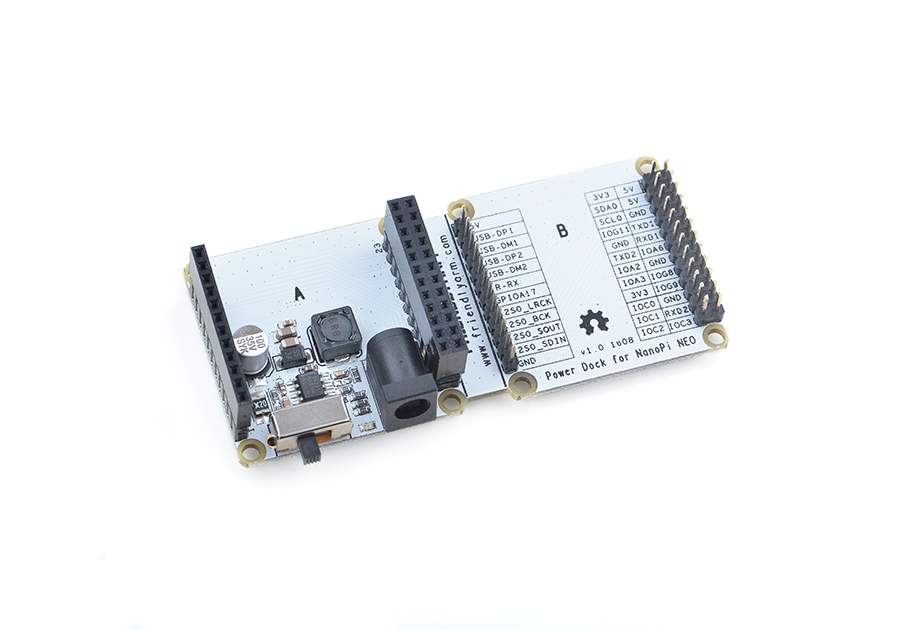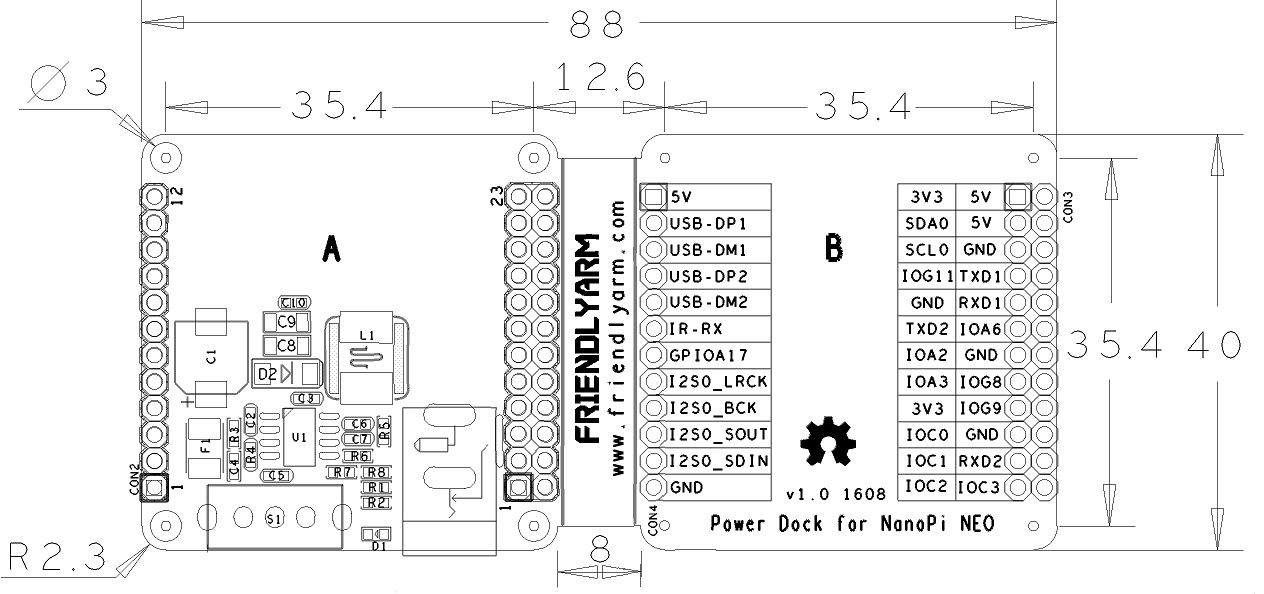Difference between revisions of "Power Dock for NanoPi NEO"
From FriendlyELEC WiKi
(→Resources) |
|||
| (One intermediate revision by the same user not shown) | |||
| Line 4: | Line 4: | ||
[[File:Power Dock for NanoPi NEO .png|thumb|Power Dock for NanoPi NEO]] | [[File:Power Dock for NanoPi NEO .png|thumb|Power Dock for NanoPi NEO]] | ||
* The Power Dock for NanoPi NEO is a power conversion board. | * The Power Dock for NanoPi NEO is a power conversion board. | ||
| − | * It uses TI's TPS54331 device with wide voltage range. | + | * It uses TI's TPS54331 device with wide voltage range.TPS54331 integrates a low RDS(on) high-side MOSFET. |
| − | + | ||
| − | MOSFET. | + | |
| − | + | ||
| − | + | ||
| − | + | ||
* Its slow-start feature limits inrush currents. Its overvoltage transient protection circuit limits voltage overshoots during startup and transient conditions. | * Its slow-start feature limits inrush currents. Its overvoltage transient protection circuit limits voltage overshoots during startup and transient conditions. | ||
* Its side A has double-layer tall female connectors which allow a NEO to be stacked on the board. Its side B populates NEO's GPIO pins. | * Its side A has double-layer tall female connectors which allow a NEO to be stacked on the board. Its side B populates NEO's GPIO pins. | ||
| Line 18: | Line 13: | ||
* Switching Frequency: 570KHz | * Switching Frequency: 570KHz | ||
* Shutdown Quiescent Current: 1uA | * Shutdown Quiescent Current: 1uA | ||
| − | + | * Under Voltage Lockout | |
* Overvoltage Protection | * Overvoltage Protection | ||
* Slow-Start | * Slow-Start | ||
| − | <!--- | + | <!--- 小康建议去掉,这两项需要实际测量 |
* 负载调整率:±1% | * 负载调整率:±1% | ||
* 电压调整率:±0.5% | * 电压调整率:±0.5% | ||
Latest revision as of 09:44, 19 April 2017
Contents
[hide]1 Introduction
- The Power Dock for NanoPi NEO is a power conversion board.
- It uses TI's TPS54331 device with wide voltage range.TPS54331 integrates a low RDS(on) high-side MOSFET.
- Its slow-start feature limits inrush currents. Its overvoltage transient protection circuit limits voltage overshoots during startup and transient conditions.
- Its side A has double-layer tall female connectors which allow a NEO to be stacked on the board. Its side B populates NEO's GPIO pins.
2 Hardware Spec
- Input Voltage: 12V
- Output: 5V/2A
- Switching Frequency: 570KHz
- Shutdown Quiescent Current: 1uA
- Under Voltage Lockout
- Overvoltage Protection
- Slow-Start
- PCB dimension(mm): 40 x 88
- Pin Description:
- GPIO Pin Description
| Pin# | Name | Linux gpio | Pin# | Name | Linux gpio |
| 1 | SYS_3.3V | 2 | VDD_5V | ||
| 3 | I2C0_SDA | 4 | VDD_5V | ||
| 5 | I2C0_SCL | 6 | GND | ||
| 7 | GPIOG11 | 203 | 8 | UART1_TX/GPIOG6 | 198 |
| 9 | GND | 10 | UART1_RX/GPIOG7 | 199 | |
| 11 | UART2_TX/GPIOA0 | 0 | 12 | PWM1/GPIOA6 | 6 |
| 13 | UART2_RTS/GPIOA2 | 2 | 14 | GND | |
| 15 | UART2_CTS/GPIOA3 | 3 | 16 | UART1_RTS/GPIOG8 | 200 |
| 17 | SYS_3.3V | 18 | UART1_CTS/GPIOG9 | 201 | |
| 19 | SPI0_MOSI/GPIOC0 | 64 | 20 | GND | |
| 21 | SPI0_MISO/GPIOC1 | 65 | 22 | UART2_RX/GPIOA1 | 1 |
| 23 | SPI0_CLK/GPIOC2 | 93 | 24 | SPI0_CS/GPIOC3 | 67 |
- USB/Audio/IR Pin Description
| NanoPi-NEO V1.1 | ||
| Pin# | Name | Description |
| 1 | VDD_5V | 5V Power Out |
| 2 | USB-DP1 | USB1 DP Signal |
| 3 | USB-DM1 | USB1 DM Signal |
| 4 | USB-DP2 | USB2 DP Signal |
| 5 | USB-DM2 | USB2 DM Signal |
| 6 | GPIOL11/IR-RX | GPIOL11 or IR Receive |
| 7 | SPDIF-OUT/GPIOA17 | GPIOA17 or SPDIF-OUT |
| 8 | PCM0_SYNC/I2S0_LRC | I2S/PCM Sample Rate Clock/Sync |
| 9 | PCM0_CLK/I2S0_BCK | I2S/PCM Sample Rate Clock |
| 10 | PCM0_DOUT/I2S0_SDOUT | I2S/PCM Serial Bata Output |
| 11 | PCM0_DIN/I2S0_SDIN | I2S/PCM Serial Data Input |
| 12 | GND | 0V |
3 Device Operation
- The Power Dock for NanoPi NEO uses TI's TPS54331 device. The TPS54331 device is a 28-V, 3-A non-synchronous buck converter that integrates a low RDS(on) high-side MOSFET.
4 Hardware Setup
4.1 Connect Power Dock to NanoPi NEO
A NanoPi NEO can be stacked on the board at side A's female connector. Its side B populates NEO's GPIO pins.
Hardware Setup
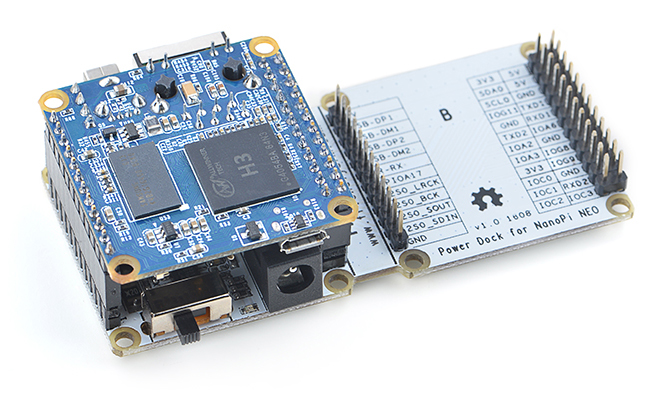
Connect Power Dock to NanoPi BAT & Other Modules:
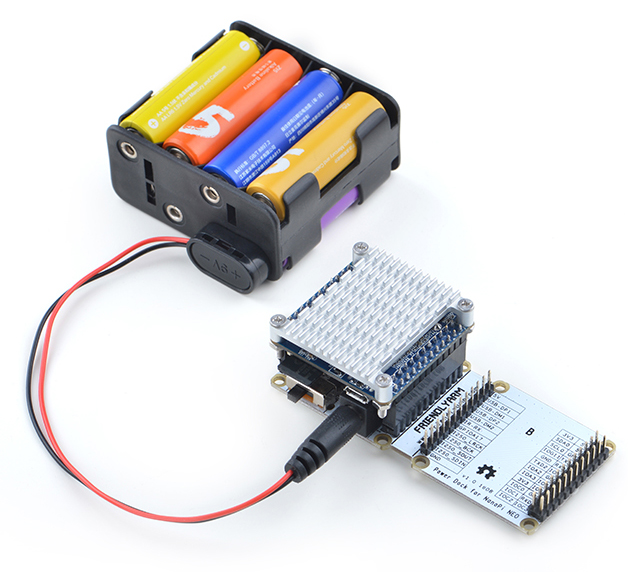
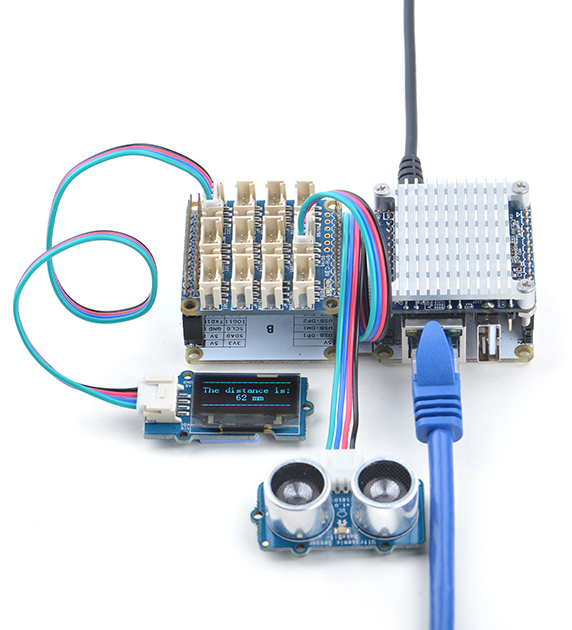
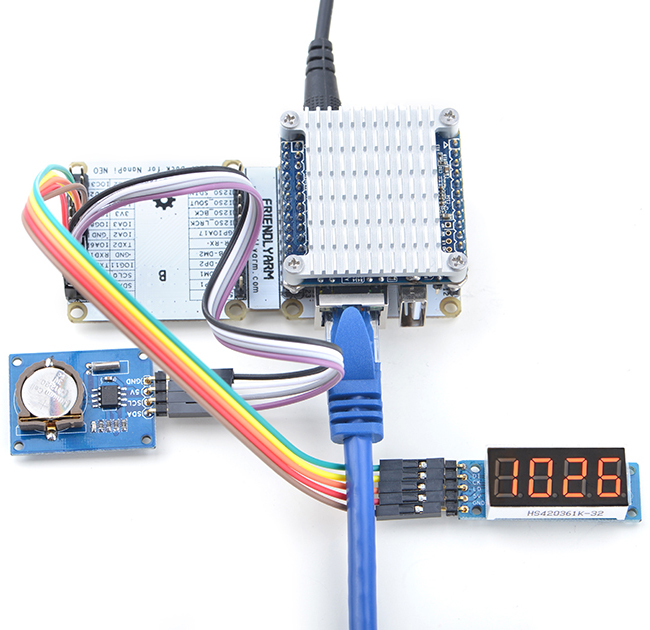
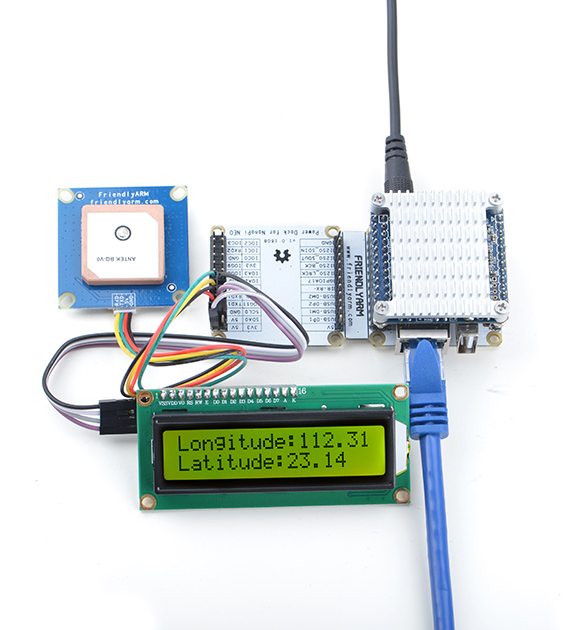
5 Resources
6 Update Log
6.1 April-19-2017
- Released English version
